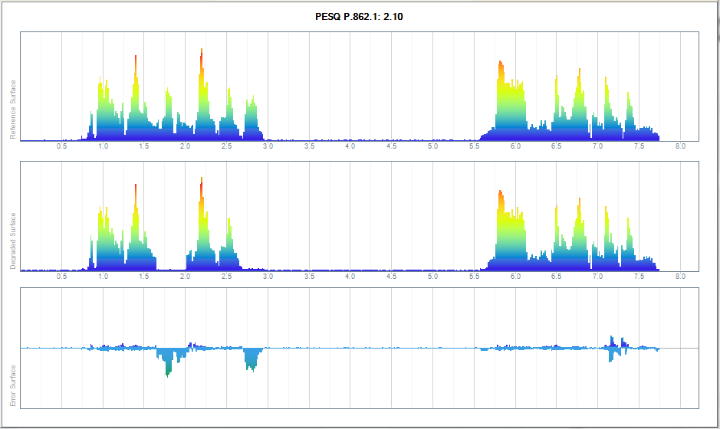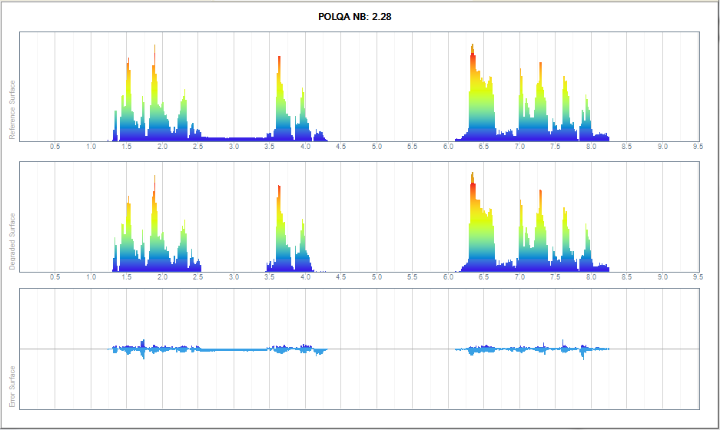We added POLQA (ITU-T P.863) to our MultiDSLA product some seven months ago. Since then, we have been busy discovering what works and what doesn’t work quite so well in the new algorithm. Most of this learning comes from working with our early adopters of POLQA. We continue to gain further knowledge about using POLQA and how to understand results that don’t make sense. We thought it would be useful to share these odd behaviours over the coming weeks. Here is the fourth one.
4. Understand how POLQA time aligns signals before analysing surface views
POLQA and PESQ align reference and degraded signals in time using rather different philosophies. PESQ evaluates the degraded signal differences compared to the reference signal and moves parts of the degraded signal around to match the reference signal. The PESQ 2D surface view shows the degraded signal time aligned to the reference signal.
POLQA’s time alignment algorithm searches for sections of the reference file in the degraded file. This results in the parts of reference signal being moved to align with sections in the degraded signal. Consequently the POLQA 2D surface view shows the reference signal time aligned to the degraded signal. This can lead to the reference surface appearing to be significantly different from what was played into the network or device under test. The example below highlights the difference from an unusual measurement.
It would appear that there is a one second gap in the first utterance in the reference file according to POLQA. However, the reference surface looks normal in the PESQ view. In fact, the network delayed the last part of the first utterance by almost one second as shown in the waveform view below. The waveform view shows the reference file that has been generated by MultiDSLA for POLQA and the degraded file that has been captured by the receiving node. Neither has been altered before presentation in the waveform view.
Contact Opale Systems or your distributor for more information.
Part 1 Don’t use more than 10s of speech in narrowband mode
Part 2 Ensure reference files pass the transparency test
Part 3 Expect reporting of small delay variations which are not actually there


